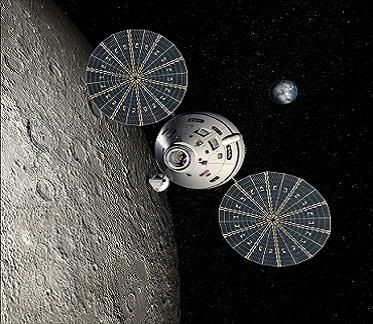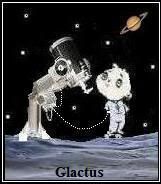Post by glactus on Nov 4, 2011 0:36:20 GMT
The design for a huge rocket to take humans to asteroids and Mars has become a reality and has been unveiled by the US space agency NASA.

The Space Launch system
The Space Launch System (SLS), as it is currently known, will be the most powerful launcher ever built - more powerful even than the Saturn V rockets that put men on the Moon. The initial design calls for the SLS to be able to put 70 tonnes in a low-Earth orbit (LEO), the altitude of the space station. Some 130 tonnes is the eventual target.

View of the rocket's enormous size
On top of the SLS, Nasa plans to put its Orion astronaut capsule, which is already in development and the first launch should occur towards the end of 2017. This will be an uncrewed test flight, and it is estimated the project will have cost $18bn (£11.4bn) by that stage.

The Orion Crew Capsule
Nasa's intention is to lean on as much space shuttle heritage as possible. Its central tank's width is 8.4m - same as the space shuttle's famous orange tank design calls for two liquid-fuelled (cryogenic hydrogen and oxygen) stages Core stage has three to five RS-25D/E engines - the units used on the orbiter.
Upper stage will use the J-2X engine that has been in development for some years SLS will incorporate solid-fuelled side boosters, although this may change over time At 2017, the SLS should be able to lift 70 tonnes to LEO. It must evolve to 130 tonnes eventually The SLS will borrow many technologies developed for the recently retired space shuttle programme. These include the shuttle orbiter's main engines. But whereas the reusable spaceplane had three such power units on its aft, the SLS main core stage in its full-up configuration will have five.
A further stage on top will provide additional muscle, as will shuttle-like strap-on boosters. Although, again, these will be bigger than those used on the shuttle.
By comparison, today's biggest commercial launch vehicles, such as the Ariane 5 or the Delta IV Heavy, can put just over 20 tonnes in LEO.
To see video of the NASA launch system just click on the link below. Has sound
www.youtube.com/watch?v=ulHd4g8Mmgw&feature=related

Credits: These are NASA images
Text by wikipedia
Video by YouTube

The Space Launch system
The Space Launch System (SLS), as it is currently known, will be the most powerful launcher ever built - more powerful even than the Saturn V rockets that put men on the Moon. The initial design calls for the SLS to be able to put 70 tonnes in a low-Earth orbit (LEO), the altitude of the space station. Some 130 tonnes is the eventual target.

View of the rocket's enormous size
On top of the SLS, Nasa plans to put its Orion astronaut capsule, which is already in development and the first launch should occur towards the end of 2017. This will be an uncrewed test flight, and it is estimated the project will have cost $18bn (£11.4bn) by that stage.

The Orion Crew Capsule
Nasa's intention is to lean on as much space shuttle heritage as possible. Its central tank's width is 8.4m - same as the space shuttle's famous orange tank design calls for two liquid-fuelled (cryogenic hydrogen and oxygen) stages Core stage has three to five RS-25D/E engines - the units used on the orbiter.
Upper stage will use the J-2X engine that has been in development for some years SLS will incorporate solid-fuelled side boosters, although this may change over time At 2017, the SLS should be able to lift 70 tonnes to LEO. It must evolve to 130 tonnes eventually The SLS will borrow many technologies developed for the recently retired space shuttle programme. These include the shuttle orbiter's main engines. But whereas the reusable spaceplane had three such power units on its aft, the SLS main core stage in its full-up configuration will have five.
A further stage on top will provide additional muscle, as will shuttle-like strap-on boosters. Although, again, these will be bigger than those used on the shuttle.
By comparison, today's biggest commercial launch vehicles, such as the Ariane 5 or the Delta IV Heavy, can put just over 20 tonnes in LEO.
To see video of the NASA launch system just click on the link below. Has sound
www.youtube.com/watch?v=ulHd4g8Mmgw&feature=related
Credits: These are NASA images
Text by wikipedia
Video by YouTube


